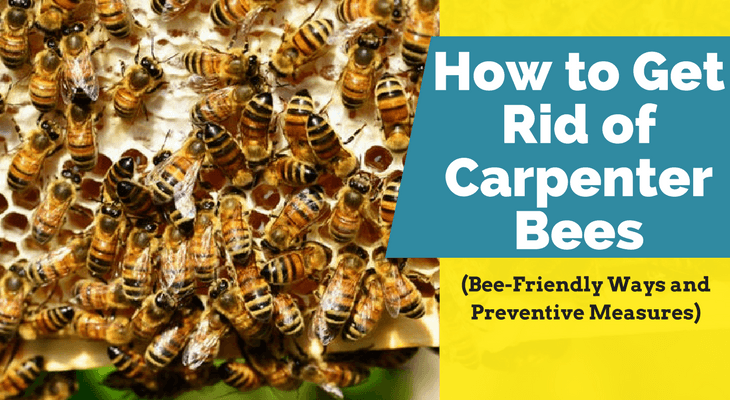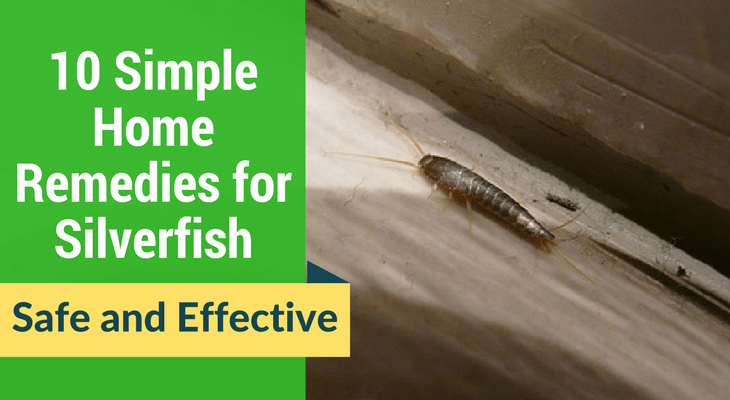How to Get Rid of Carpenter Bees with 7 Natural, Harmless, Yet Effective Environmental-Friendly Ways
Do you need to make holes in your house’s wooden structure? Then call the carpenter. Carpenter bees. They will dig tunnels into the wood because that’s how they’re buzzy (sorry, busy) building their nest.
But if you’re like me and look in disbelief at the holes drilled into the carpentry of your house by these fluffy big buzzing carpenter bee who did that, then you will be busy searching on the internet how to get rid of carpenter bees as fast as you can.
So, before declaring war on carpenter bees, I’d say let’s find out more about them, right? Knowledge is power.
Let’s Dig Into Carpenter Bees
Getting rid of carpenter bees is not that easy, but knowing your enemy better helps you solve the problem easier and faster.
- Carpenter bees are also called wood boring bees.
- They look a bit like bumble bees, but they have a shiny black abdomen (bumblebees have dense hair underneath them).
- Male carpenter bees don’t have a sting. Females have a sting but won’t use it unless provoked. So, they are not threatening, from this point of view.
- Females are busy carving the tunnels, while males guard the entrance.
- They have a main habit (besides gathering pollen): they like to dig tunnels into the wood. How do they do it, you wonder? Believe it or not, they literally chew on it, but they spit it out.
- Soft woods, such as pine, fir, oak, cedar, cypress, and redwood are their favorites.
- You can find them in fence and utility posts, firewood, porch ceilings, decks, garages, and garden buildings and furniture. They also hit on wooden doors, windowsills, roofs, railings, and siding.
- Each entry hole is round and has a half an inch diameter.
- Carpenter bees live individually, not in colonies. So, usually, in a tunnel, you won’t see a swarm of bees, only up to 20 bees.
- Even if it doesn’t seem to be a problem initially, as times passes by, carpenter bees keep digging deeper into the holes, making them longer and longer, and adding new adjacent tunnels.
- The tunnels serve as pollen warehouses and nursery for the larvae.
- Carpenter bees are great pollinators, helping garden, corps, and wild flora thrive. They play a major role in pollinating flowers such as Salvia. In fact, they are the only pollinators of two herbs: Passiflora and Orpheum, which are not pollinated by any other insect except carpenter bees.
So, you see, they are important for our environment, even if they chew a bit on our porch. That is why, I will you only tell you how to use carpenter bee repellents, and not how to kill wood boring bees.
How Much Damage Carpenter Bees Do Around Your House
Well, they won’t bring your house down, that’s for sure, even if they drill multiple holes in the wooden structure or the porch.
- Too many carpenter bees living, multiplying, and drilling for years in the same holes in the wood structure can be damaging at some point.
- If you add Woodpeckers to all this bee madness (woodpeckers love to eat carpenter bee larvae) you will have so many holes in your wood that you won’t know what to do to get rid of carpenter bees quicker.
- As if this wouldn’t be enough, moisture, rain, and humidity in the air can further infiltrate into these tunnels, cause the wood to rot, and weaken the wood structure.
- Mold, fungus, and wood decay take the things to a new level and lead to serious damage. It is very, very rare, but it may still happen.
5 Preventive Measures Against Carpenter Bees
- Inspect the wooden parts of your house and around it periodically, looking for possible holes.
- If you spot carpenter bees entrances, plug the holes with copper gauze, steel wool, plastic wood, then seal it with wood putty or dowel and glue.
- Bare, unfinished wood surfaces are more likely to be attacked by carpenter bees that treated ones. Why? Because it is easier to dig into them (duh!).
- So, even if you prefer the look of untreated wood, do yourself a favor, treat and paint the wood with thick layers of varnish, polyurethane or oil-based paint. Boring bees most likely won’t like the taste of it and will avoid it.
- If you have painted wood, but see that the coating has deteriorated and the wood is exposed to carpenter bees attack, repaint the wood as often as necessary to keep them away.
How to Get Rid of Carpenter Bees without Harming Them
If you’re a compassionate, environmentally conscious person, a bee supporter or maybe you’re vegan or vegetarian and feel for living creatures such as bees, even if you deal with carpenter bees-inflicted damage, you will not want to kill them.
So what to do about carpenter bees, without killing them?
Rest assured, we’re not going to tell you how to kill carpenter bees, but only how to repel carpenter bees from your property with natural, harmless (well, as harmless as possible), non-toxic methods that won’t damage the bees, people, animals, or environment.
Let’s bee friendly with carpenter bees (pun intended)!
6 Home Remedies for Carpenter Bees
1). Let the Music Play
Mmkay. Music? For bees? Come on. (I hear you)
Let me explain.
Carpenter bees are very sensitive to loud noises and vibrations. They actually hate it. So, if you produce constant loud noise or strong vibrations next to their nests, it will force them to leave and find a new home. Turn the bass at the maximum, to get heavy vibrations.
This is a safe, non-toxic, non-harming carpenter bee repellent.
After they leave, proceed with sealing the holes, painting, so they will never return.
2). Vacuum Clean ‘Em Bees
Should the previous method not work, just suck them out of their holes with a vacuum cleaner. Put the small nozzle at the entrance of the holes, turn the vacuum cleaner on and suck the bees out of their tunnels.
Do this in the evening, when the bees have returned in their nests, to make sure that they are inside.
Then, simply get the vacuum cleaner’s bag full with bees out and take it on a ride (maybe a long, long rid in a forest area), carefully open the bag and leave them there, to find a new home in the wilderness with plenty of wood there, away from humans and their houses.
Which brings us to the next bee-friendly method.
3). Move the Wood and Give The Bees a Free Ride
If there are many holes drilled in the wood and if you can replace it with a new one (which will be treated and painted to repel carpenter bees) then, by all means, do it.
Carefully load the wood with tunnels (and bore bees and larvae) in the back of your truck and take the wood and bees into the forest. They will love it there.
Free ride. New location. No harm done. Happy bees.
You, a bit tired.
But, problem solved.
4). Spray the Citrus Out of Them
Carpenter bees hate the citrus scent. Bam! Are you thinking what I’m thinking? You can repel them with it.
Mix Lemon essential oil with water in a spray bottle (let’s say 50 drops in 2 cups of water) and spray the burrows of the carpenter bees and the wood around it.
If you feel really crafty, prepare a homemade citrusy cocktail for bees. Shave or grate the rinds of citrus fruits, cover them with water, and simmer for 20 minutes. When it’s cold fill a spray bottle with this carpenter bees repellent juice.
5). Aromatherapy Against Carpenter Bees
Use the strongest, best bee repellent essential oils against them.
- Tea tree oil
- Lavender oil
- Clove oil
- Citrus oils (but I have already mentioned them above)
- Sage oil
- Eucalyptus oil
DIY Bees Repellent Spray
You will need essential oils and alcohol (99% rubbing alcohol or vodka) – no, we’re not having a party with them. Okay, maybe just a goodbye party. A scented goodbye party. Farewell, good carpenter bees. It’s time to move to a new house, in the forest, away from us.
- Alcohol – 1 cup
- Tea tree oil – 25 drops
- Lavender oil –17 drops
- Sage oil – 15 drops
Combine ingredients in a spray bottle, shake, and spray the carpenter bees nests and around them. Do so during the day, when they are gone out, not in the evening, when they have returned and they are inside. We want to keep the war without casualties, remember? We just want to chase them away, not harm them.
Essential oils are a harmless, environmental-friendly, effective, and powerful method of natural pest control.
6). Butterfly Net Catcher
Let’s catch some carpenter bees now with a butterfly net. They get easily caught inside it. It’s a hassle-free battle for you and a harmless trap for them.
Once you get them, put them in a bucket with lid. Then take the bucket far away from your house, in a forest, with plenty of wood for them to find a new home.
Well, I’m not going to lie, it’s a little bit of work for you, but let me tell you that this is a great exercise for you the benefits for your health.
And let’s also mention that the bees will live happily in the forest ever after!
Happy Ending
Now, since you succeeded and learned how to get rid of carpenter bees with natural, safe, harmless, and effective repellents, focus on some work around your house, covering the holes, painting, repairing the wood, and replacing the wood with a new one.
What method did you use to get rid of carpenter bees without harming them? Let us know in the comments below.











2 comments
I used the two oils I had (lavender and tea tree) and mixed about 30 drops of each in about 1,5 cups of water in a spray bottle. I soaked the whole area around the holes (under window frame and door frame) with the mixture. I noticed the bees came back and checked it out but would not go back in. I’m hoping this is the last of them boring holes in my house. I plan on filling the holes and painting in the next few weeks.?
Your point of view caught my eye and was very interesting. Thanks. I have a question for you.